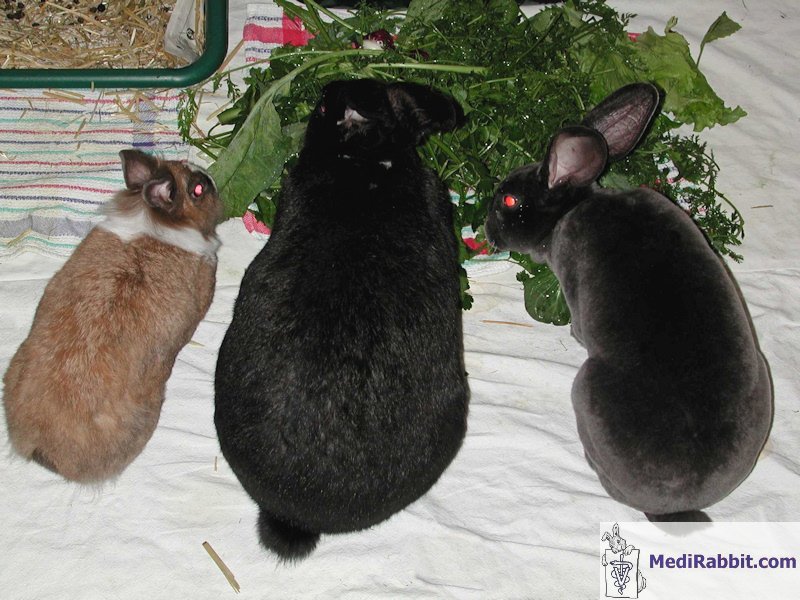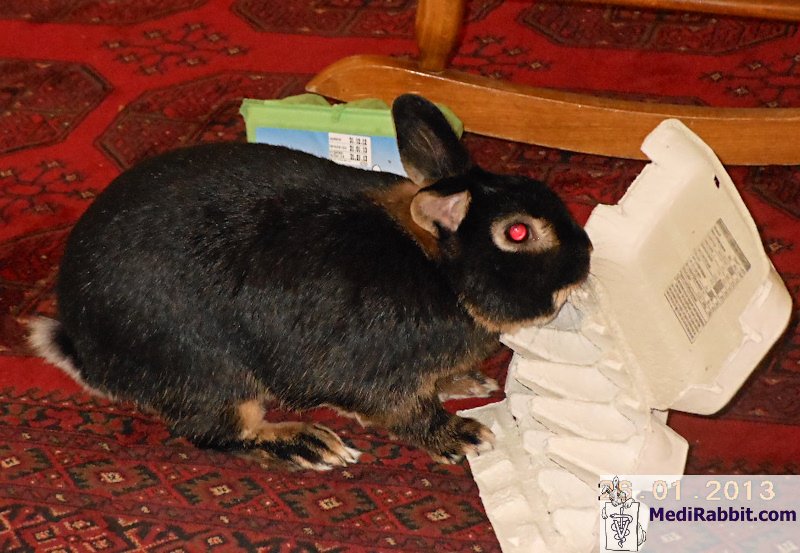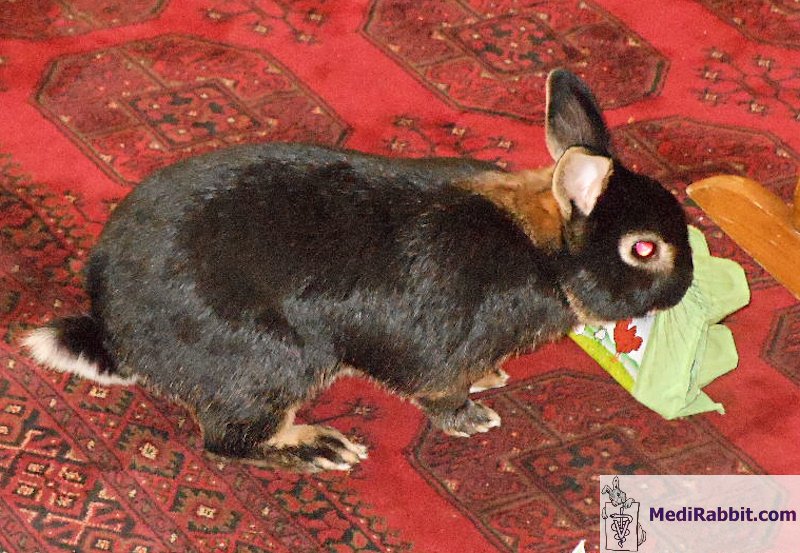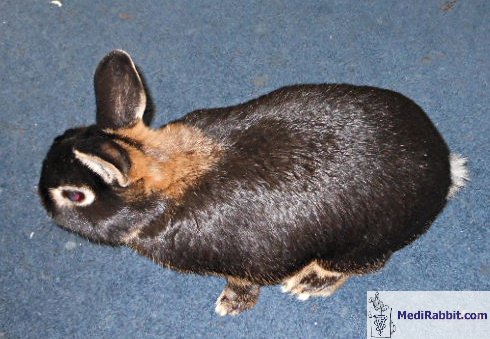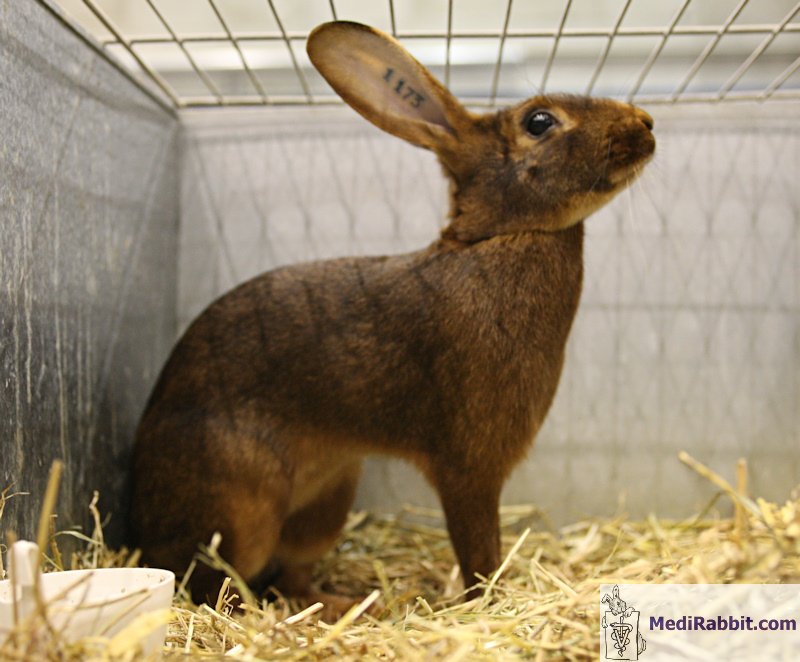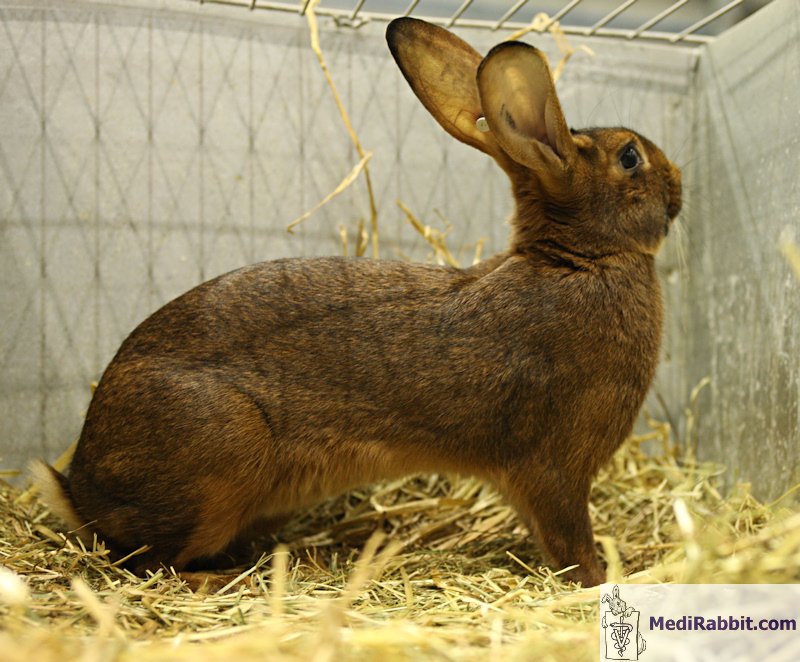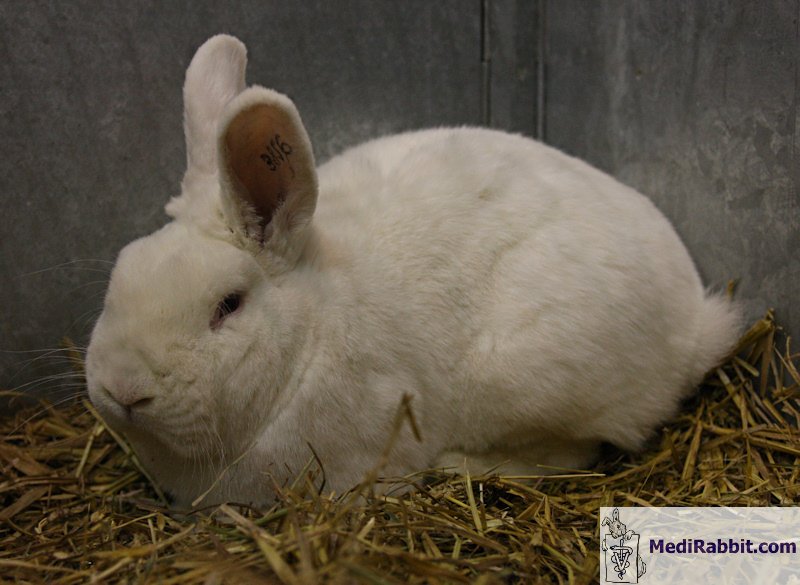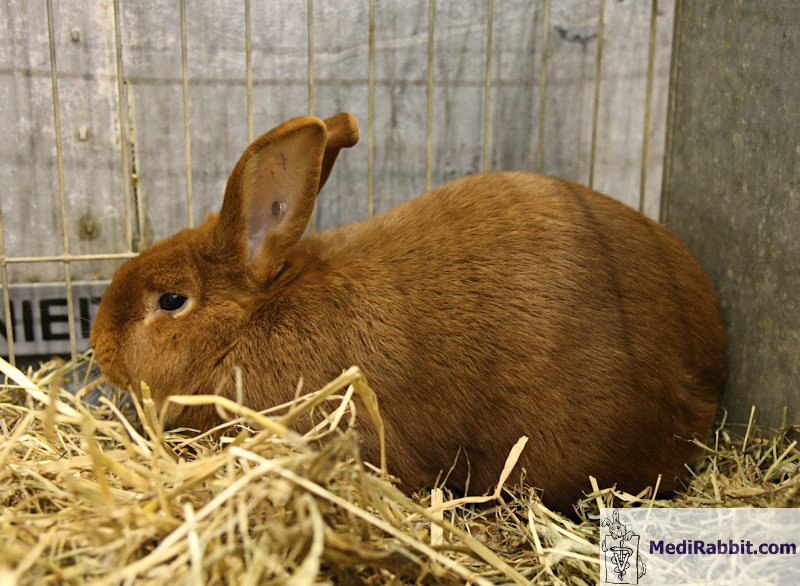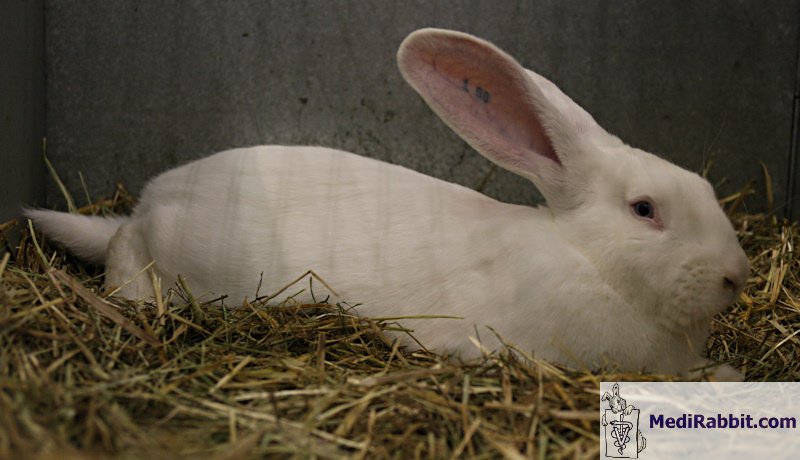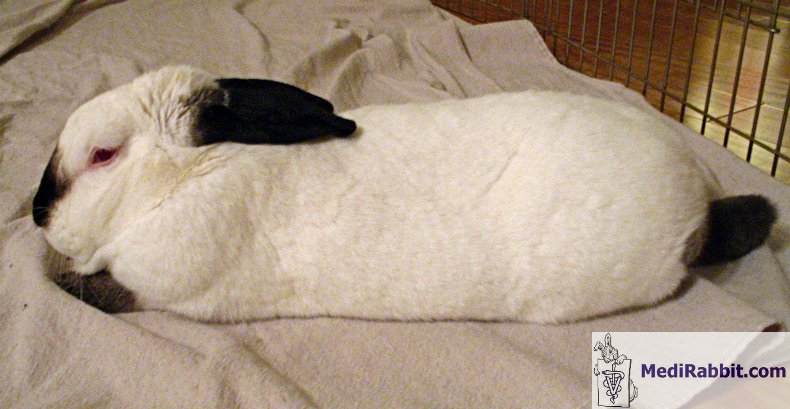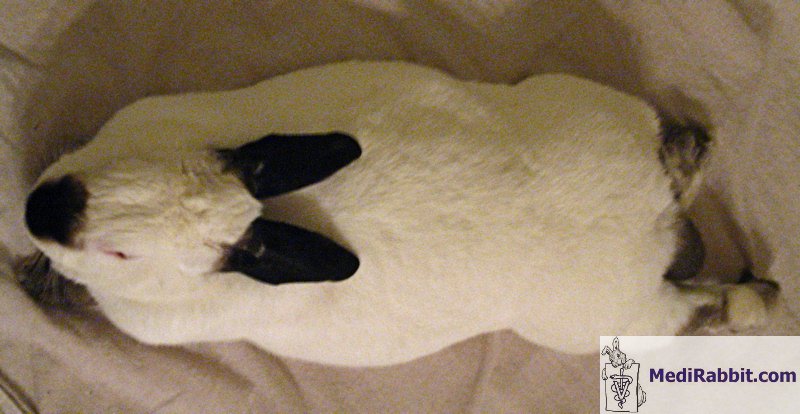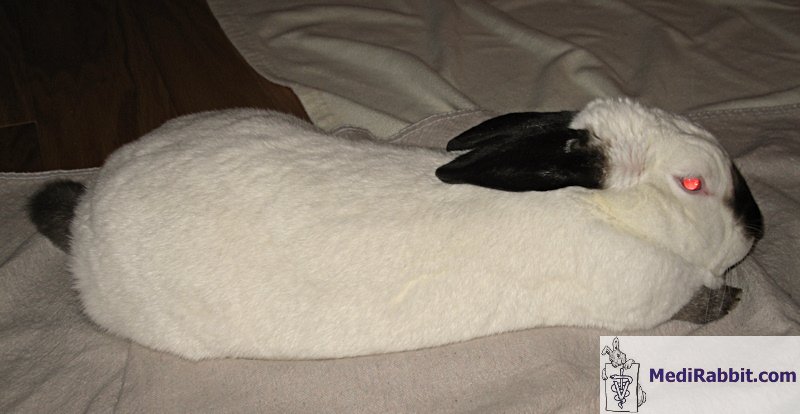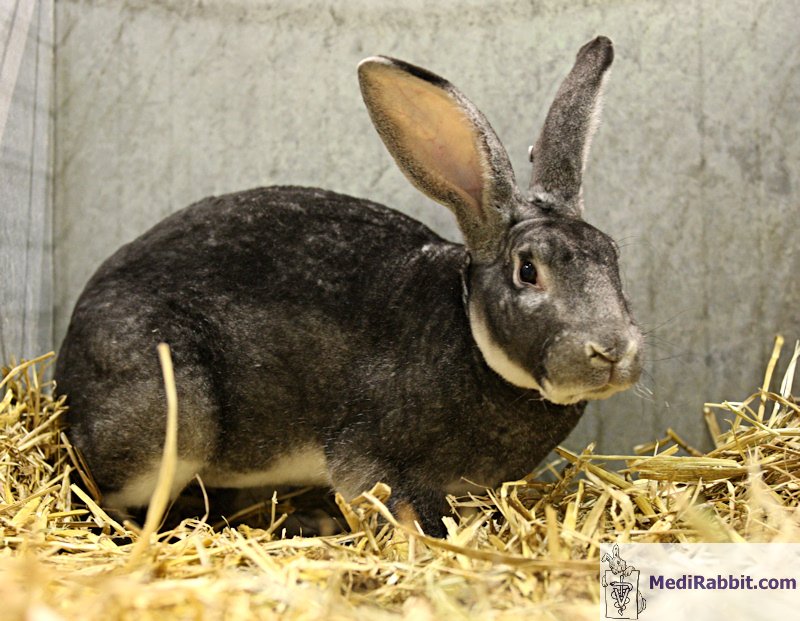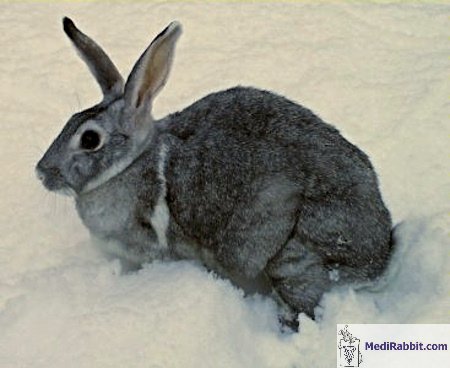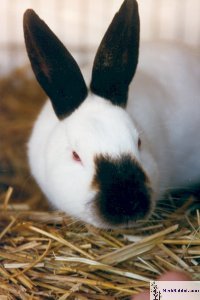
Administration
of drugs:
the
conformation of the rabbit body can be misleading...
Esther van Praag Ph.D.
MediRabbit.com is funded solely by the
generosity of donors.
Every donation, no matter what
the size, is appreciated and will aid in the continuing research of medical care
and health of rabbits.
Thank you
|
|
Breed
rabbits have different body shapes, according to their breed. The same is observed
in house or pet rabbits. Some rabbits may have a long, slender body that
gives them a slim appearance. Others have a short and broad body, which may
be confused with obesity. These rabbits are, however, not obese.
It is
important to be aware of the different characteristics of breed-rabbit’s bodies,
recognize the body shape of a pet rabbit and, when possible, associate it to
a possible breed by observing its body type and its fur. If a veterinarian
concludes that a rabbit with a short broad body is obese, he may increase the
doses of drugs, e.g., of sedatives as these accumulate in the fat tissues, or
of anesthetics. As a result, overdoses can lead to grave consequences for the
rabbit, and can rarely be deadly. Indeed, too high doses of sedative can
leave the rabbit hypothermic and apathetic after the surgical procedure,
without appetite and wish to drink over the next 24 hours.
The definition
of a rabbit type includes size, weight and general aspect as seen from the
side, the front and from the top. This latter parameter includes an
examination of all body regions: head, abdomen and limbs. All these
parameters put together help define the body type of a rabbit. Six distinct
types have been defined based on the various rabbit breeds: the slender type,
the cylindrical type, the conical type, the ultra-convex type, le short or
stocky and the long slim type. Pet rabbits, whose origins or who had mixed
parents may present a mix of body types. It is important to recognize these,
and not consider the rabbit as obese. Long
svelte type
This type is characterized by the Belgian hare. The
body is slender. The spine line is arched and the curvature continues from
the shoulders to the tail. When viewed from the side, there is no sagging of
the ventral abdomen. The dorsal line is parallel to the ventral line, giving
a spindly appearance to the body. The front limbs are straight and long.
Bones are delicate. During palpation, it is possible to feel the ribs and the
hips.
Commercial
type
Rabbits with a commercial body type have a heavy and
strong body, with a well-developed muscular mass. The body is short, hips are
wide, but proportions between the length and the width of the body are
harmonious. The regions of the body located on the side of the spine are
filled and the hips are rounded.
Massive
short type
These
rabbits have a strong short body. The muscular mass is well developed et
strong. The region ranging from the shoulders to the tail (saddle) is strong,
thick with strong shoulders. The dorsal line is round. The front part of the
body is often more developed than the hind part.
Cylindrical
type
Rabbits
that present this type of body are typically slender. Their length and width
are, nevertheless sufficient to show the body shape. Their head is elongated
and slender. Limbs are long and thin, with fine bones.
Further
body types include conical body shape (shoulder region is narrower than the
hip region), ultra-convex body shape or long, thin body shape. Acknowledgements
Many
thanks go to (alphabetic order) to Jen Devisme (USA), to Michel Gruaz (Suisse),
to Iris Hadar (Suisse) and to Arie van Praag (Suisse)
for the permission to use their pictures. |
|||||||||||||||||||||||||||
e-mail: info@medirabbit.com


